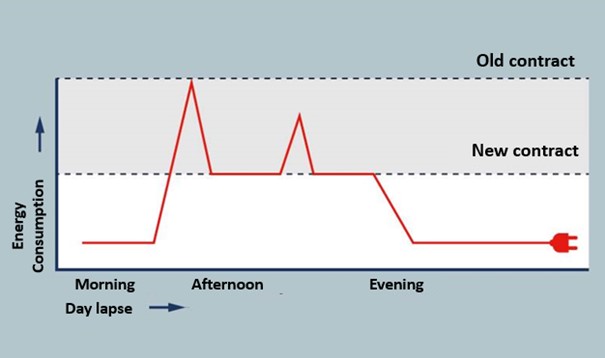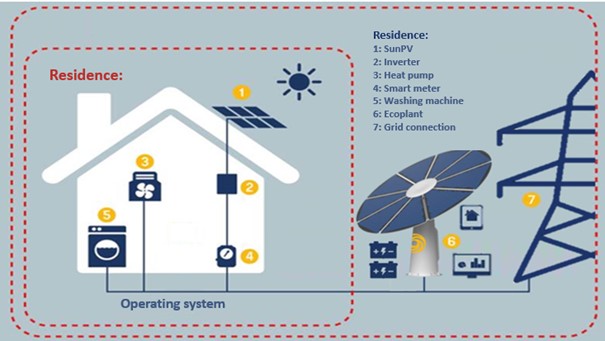Why is battery storage important? And what is peak shaving?
Evenly energy consumption in the house
In various areas, people are pioneering storing self-generated energy for use at different times. We call that peak shaving. A battery stores energy generated during the day to cope with peak moments in energy consumption in the morning and evening. Sustainable energy thus remains in the home, which stimulates the sustainable behaviour of residents.
Twice a day a peak
In the morning. Many people wake up around the same time to go to school or their work. Lighting and appliances are switched on in a short period: a peak moment for the energy network. After the school day or working day, everyone returns home at the beginning of the evening. The house is heated, lighting and appliances are switched on and the car is charging. Doing laundry, playing games, and meanwhile cooking. At this time of the day, just like in the morning, a lot of energy is consumed around the same time. So, there are two clear peak moments per day.
The network connection must always be able to handle these high peaks.
The higher the peaks, the higher the capacity costs charged by the grid operator. These costs are significant. Reducing the peaks results in a more even energy consumption and the costs of the energy bill go down. This is called peak shaving: levelling the electricity demand and thus the load on a generation system. Power is stored during ‘off-peak hours’ and this power is used during peak hours. This is possible with alternative energy sources and smart energy systems. That is good for the environment and good for your wallet.

The alternative
The energy that we now use comes from the power plant and is still not completely green. It is also quite valuable energy. An alternative is the use of solar panels on the roof. The only drawback is that the solar panels generate a lot of energy during the day, but that hardly any use is made at that time. The generated energy is most needed at other times of the day.
The excess energy is then returned to the electricity grid. Collective re-supply, for example, when solar panels have been purchased by an entire district, demands a lot from the capacity of the electricity network. This can create a bottleneck, comparable to a busy slip road on the highway. To prevent bottlenecks in the energy supply, capacity can be increased by installing more or heavier electricity cables. Because this is expensive and not always efficient, innovations such as storage and managing supply and demand are also an alternative.
Every Ecoplant can be equipped with Lithium-ion battery system with a capacity of 21 kWh. This battery stores energy, which is generated by the solar panels during the day. This stored energy can be used at a different time when there is a peak moment.
An application in the Ecoplant or a smart meter shows what the various devices in the house use, what is generated, and how much the battery is charging. Devices can even turn on automatically if, for example, the sun is shining. This way people can use their green energy, even when the sun is not shining. They now feed as little generated solar power back into the electricity grid as possible. Also important for reducing energy netting. Local supply and demand are thus more closely aligned. This is better for the electricity network because it is less loaded and therefore there are fewer disruptions.

Leave a Reply